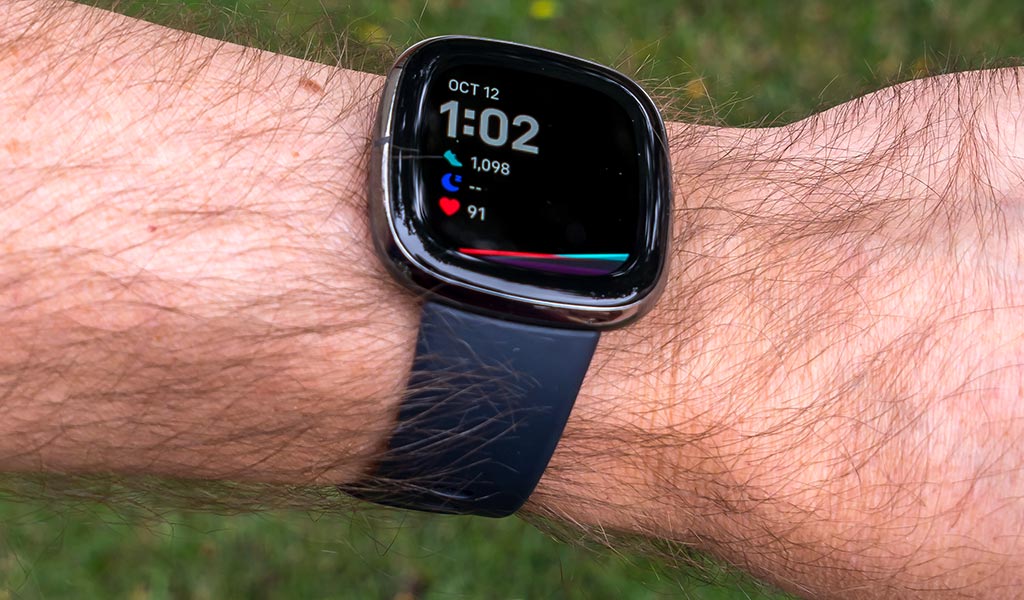
The Sense is Fitbit’s most ambitious attempt at making a smartwatch that is truly smarter than ever, starting with its newest features.
Fitbit launched a few products this year to push its focus on making more sense (no pun intended) of the data it collects. In this case, the company added new sensors to its premier smartwatch to track more relevant points. It’s a worthwhile endeavour because we’re long past the point of telling time and tracking exercises. The sum of all the data now has to say something about your health.
It’s mostly a work in progress to get there, though there does appear to be light at the end of the tunnel. Android users looking for an alternative to Samsung or Wear OS smartwatches may like what Fitbit has done here. If you’re looking to keep tabs on your health and wellness, you will need to carefully consider the Sense.
Fitbit gives the Sense a familiar look
While a different product from Fitbit’s Versa line of smartwatches, the Sense doesn’t sport a dramatically different look. The squared form factor is consistent with the Versa models, though some nuances do stand out. The frame around the 1.58-inch AMOLED display is made of stainless steel, rather than aluminum. Fitbit changed the latch for bands, making it much easier to replace them. It’s just unfortunate that previous Versa bands don’t fit here.
New sensors include a heart rate variability (HRV), electrodermal activity (EDA) and electrocardiogram (ECG). The only problem is the latter one, the ECG, still hasn’t gotten a green light from Health Canada, so it’s dormant for now.
Just as importantly, however, you get built-in GPS for tracking, and a speaker for audible feedback. With the former, it’s easier to track a route without bringing your phone along. With the latter, Amazon Alexa and Google Assistant can speak to you, plus you could do phone calls from your wrist. Fitbit even changed the charger, going with a magnetic attachment that is far more elegant than the clamps of the past.
It’s a nice mix of features and functions, except they’re not all available as of this review. If you anticipated they would be ready to go at launch, you’ll need to exercise some patience. Google Assistant isn’t coming till sometime before 2021, and the phone features are likely in the same boat.

Alexa gets its voice back—maybe soon
With the Versa 2, Alexa was a silent partner in using that watch. You could talk to it, but you could only see responses onscreen. It was easy enough to use it to control smart home devices, but the whole execution never felt polished to me.
It would only work when it had a data connection through the paired phone. That’s unchanged, as there is no LTE variant for the Sense. All well and good, though I found this less useful at home where an Alexa-enabled speaker could just perform the same tasks. If you don’t have an Alexa-enabled device at home, however, I can see the appeal for using the Sense instead.
It doesn’t do everything you’d want or expect, though. For instance, I couldn’t get it to play music, or even skip/repeat a track on Spotify, a streaming service it readily supports otherwise. Of course, you also can’t call people through Alexa, either. It’s also not equipped to handle more intricate or complicated questions or tasks.
It also doesn’t talk yet. The Sense has a speaker, but as I wrote this, it wasn’t active. Fitbit says it soon will be, and when it is, it will handle hands-free calls. No word on if Alexa will speak up as well, but it’s certainly possible.
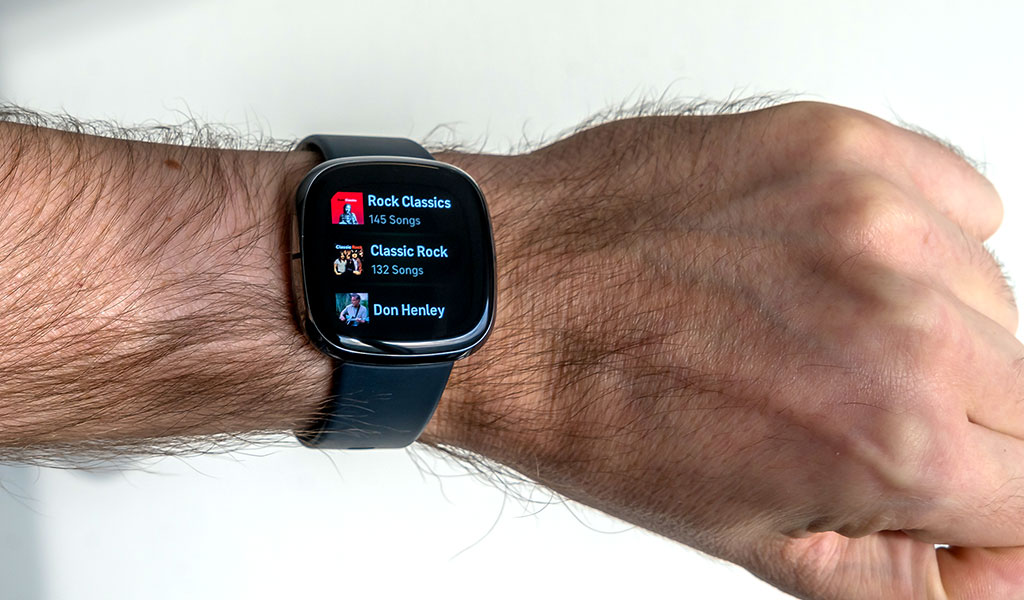
Music and apps
I liked how Fitbit integrated Spotify into the Versa 2, but I wish it went further with the Sense. There’s over 2.5GB of free storage to use, set aside for apps and music. Unfortunately, there’s no way to save Spotify playlists for offline playback to take the phone out of the equation. Samsung supports this, so it’s a shame Fitbit missed the boat again.
Hopefully a future software update can enable that (I see no reason why it couldn’t). Otherwise, Spotify works the same way with the Sense. You can control playback and select from your playlists—but you need your phone with you. With Deezer, however, you can store songs for offline listening as a subscriber.
You will find apps to download within the Fitbit app, but selection needs to grow to make more of an impact. It’s great that familiar ones, like Uber and Hue Lights, are there, but many will still be unknown to you. One of my personal favourites is Barcodes2 because I can add loyalty cards through their barcode numbers, and then scan them at points of purchase.
As for Clock Faces, there is a dizzying number available. Think of a conceptual watch face, and it’s probably in here. Well, except for one—and it’s a big one. Fitbit released its own SpO2 Signature face in September, which tapped into the Sense’s SpO2 sensor. It’s one of the most important ones available, and Canada was among the first to get it.
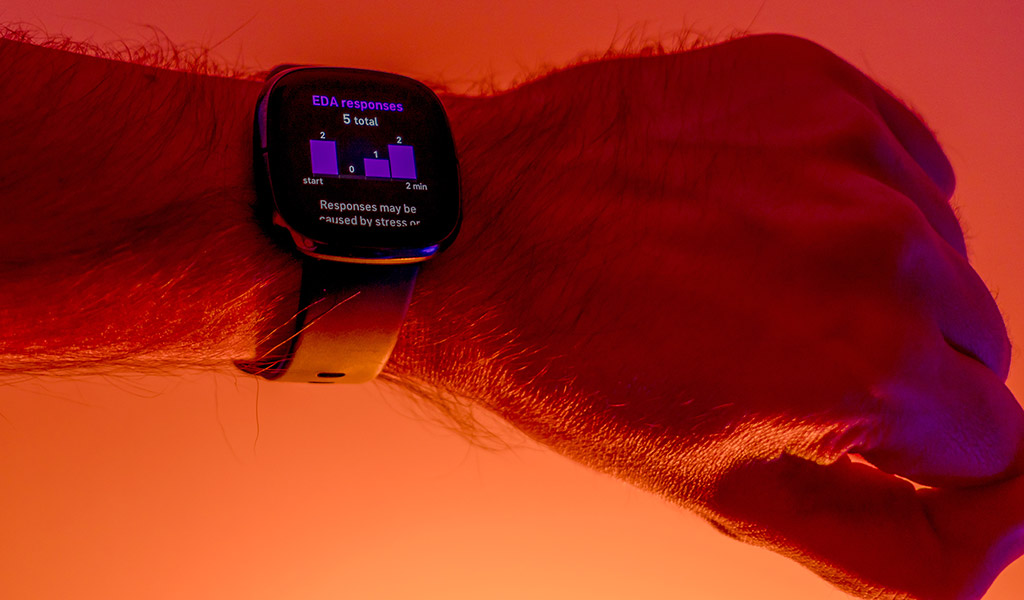
Gauging the new EDA sensor
The new electrodermal activity (EDA) sensor is a first for Fitbit. Basically, its purpose is to measure stress by pulsing your skin with tiny electric charges and gauge your sweat level. It sounds worse than it is because you don’t actually feel it when it’s happening.
Tap the EDA Scan app on the Sense, place your hand over the display, then wait two minutes for it to finish. Waiting will feel like the longest two minutes ever, but it’s the best way to get a full reading. When it finishes, you’ll see some metrics, like number of EDA responses. Stress or other factors might cause them, but the sensor has no way of knowing exactly. Scroll further down and it shows your heart rate variance, plus your reflective mood based on what you selected.
That’s the manual route. The sensor does work throughout a given day for some quick readings, though it’s unclear how beneficial they are. The thing about a feature like this is you’re more likely to do a manual reading when you’re feeling overwhelmed or stressed. That could skew the Stress Management score you end up with on the Fitbit app’s Dashboard.
That score combines the EDA scans, heart rate monitoring, exercise and sleep quality. It seems holistic—and certainly is in theory—only Fitbit doesn’t provide much context or insight into what the score means. Sure, between 1-100, anything closer to 100 is good, except it doesn’t always seem accurate. In one case, my responsiveness and sleep were great, while my exercise level was decent. It scored me an 84, and I’m not sure why.
It may clue you in that a lack of sleep or exercise may be behind a low score, but you may be lost if you get plenty of both.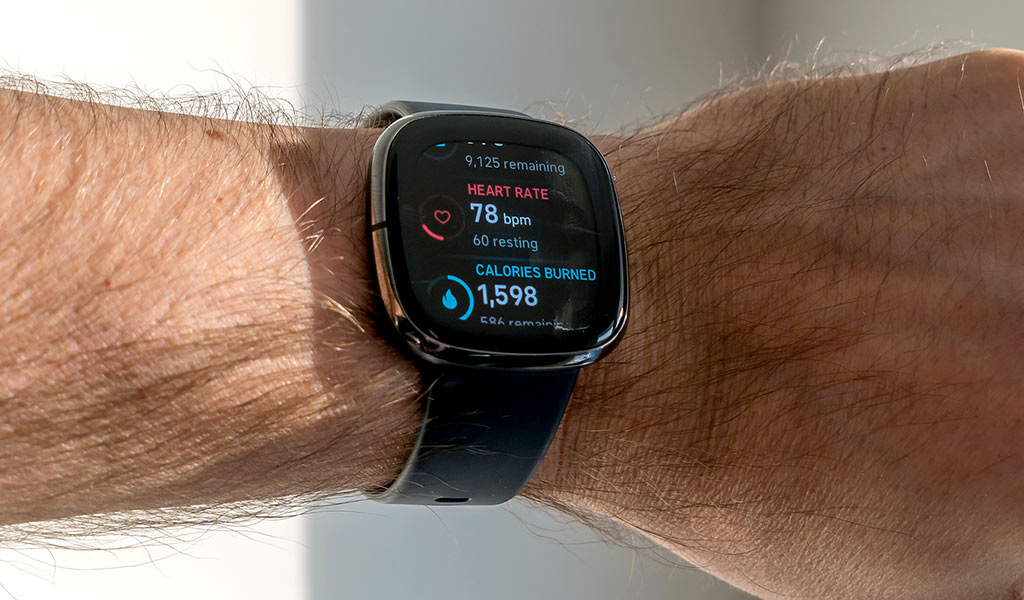
The new skin temperature sensor
The timing for this couldn’t have been better. In the midst of a pandemic, any fluctuation in temperature may be an early warning sign of an impending illness. The skin temperature sensor’s job is to measure variances throughout the night. A graph on the app shows your personal range, and whether you were too high or too low.
Minor fluctuations are normal, but anything more dramatic may be a sign of something. Fitbit has no way of knowing one way or another, but the fact that something’s off is worth investigating. It really only tracks temperature during sleep, noting range by percentage. For instance, I was routinely above 94% in my personal range, with the rest being lower. I never once saw it go up higher during my review period.
I love this feature, personally, and fully expect it to be a staple of future Fitbit smartwatches. It’s passive, yet captures an important metric that could potentially find something important. It won’t know if you’ve caught the virus (or some other exact pathogen), but weird fluctuations are definitely your body telling you something.
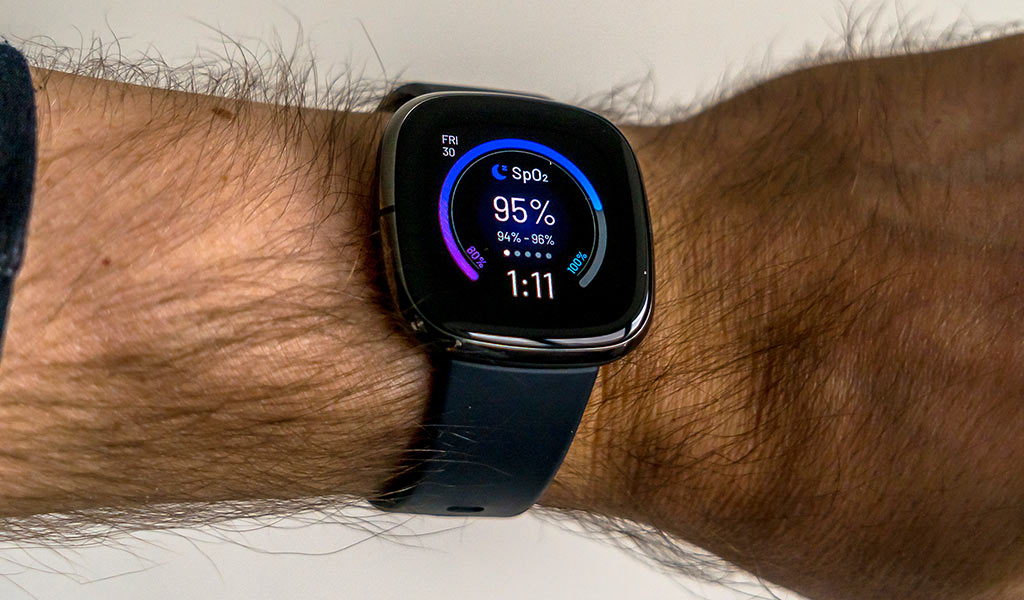
The SpO2 sensor and (missing) ECG
As of this review, the SpO2 sensor only worked with Fitbit’s Signature SpO2 clock face. It’s a pulse oximeter that only really works while sleeping to measure blood oxygen levels. I don’t fully understand the reasoning why that is, considering the Apple Watch and Samsung watches make it readily available anytime.
In this case, you first have to choose the SpO2 clock face before going to bed so it can actually track you while you sleep. Even then, you have to wait a good 45 minutes or so before even seeing the score. Hence, you don’t change the clock face back to another until then.
As neat as it is, the results don’t provide a whole lot of context. You can show it to a doctor who may glean some insight out of it, but otherwise, Fitbit doesn’t tell you much about it.
The lack of the ECG in Canada is already hard enough, at least until Health Canada approves it. But to not have the SpO2 sensor only work with a specific clock face is a bizarre functionality choice. Thankfully, that will change in due time.
![]()
Tracking everything else
The Sense isn’t the first Fitbit device to get GPS (that would be the Ionic), but it’s great to have here. No need to bring your phone along if you want to track actual distance outside. The watch tracks the same exercises, of which there are several, and performed consistently when I tested it. It also carries the same water and sweat-resistance, so you can go down 50 metres underwater. No saltwater, of course, through pools and showers are fine. And it’s just as important to rinse and dry it after you’ve got it wet.
I like that the heart rate monitor will alert you if your heart beats too low or high when you’re inactive. I never actually saw it happen, but it is there. Again, a potential warning sign if it’s not a one-off situation. The Sleep Score is still there, and just as good as it’s always been. Still one of Fitbit’s stronger features, in my view.
The Active Zone Minutes are also back. Fitbit introduced this with the Charge 4, where the objective is to hit fat burn, cardio and peak heart rate zones during activity.
Heart rate monitoring also stays steady through the new PurePulse 2.0 technology. It holds up really well in the Sense by measuring your heart rate all day and night. If you’re curious about getting your variable heart rate, you won’t be disappointed.
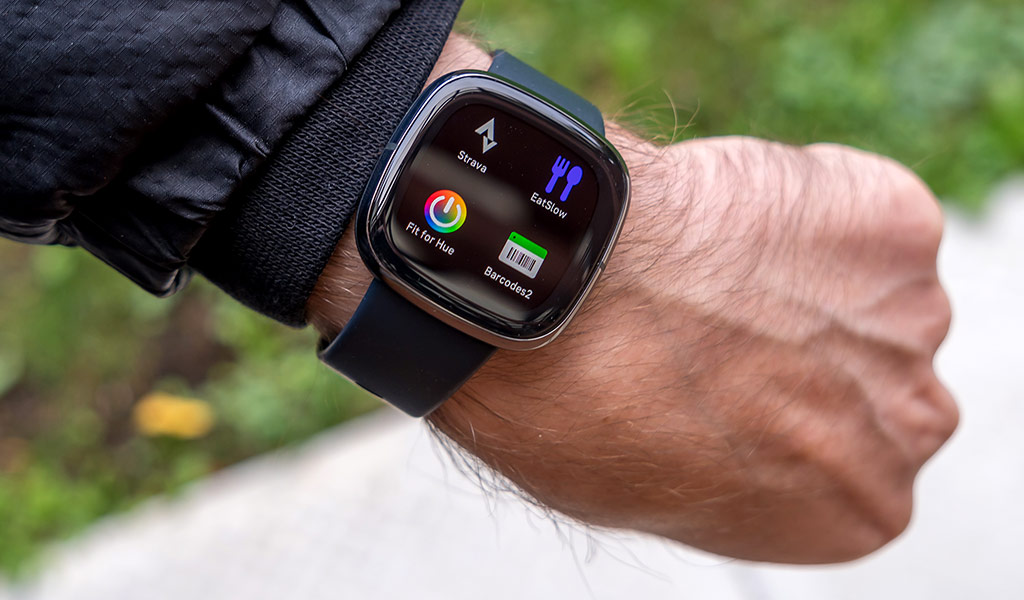
Fitbit Premium
Fitbit’s subscription service figures more prominently here for a few reasons. First, features like the Stress Management graphs, Health Metrics dashboard and advanced sleep analytics are for members. Second, the meditation features associated with the EDA scans are also for members. And third, guided programs and workouts are also the backbone of the service.
It still costs $10/month or $106 for the year, so you will have to gauge whether it’s worth trying.
For what it’s worth, Fitbit says the Health Metrics dashboard will eventually be a free feature within the next few months. For now, however, it’s a Premium feature. The Sleep Score might also follow suit one day, but it’s also with Premium.
Battery life
The Sense carries all these sensors, and yet, the real battery-drainer is the built-in GPS. At least that’s what I found whenever I went out riding my bike. After just one hour outside, it went down 15%. Despite that, with an always-on display and a mix of exercise tracking and EDA scans, the battery will hit two days. Turn the always-on display off, and you double that to four days.
When the other features kick in, it will be interesting to see how the battery holds up. The speaker is silent, Google Assistant isn’t active yet, and the phone call and texting features aren’t quite fully polished yet. They will undoubtedly make the Sense better, but a battery hit is also likely.
Final thoughts
The bottom line is the Fitbit Sense is an incomplete device, simply because not all intended features are there yet. They are “coming soon” but it won’t be all at the same time. If you like having all that sensory technology—and can be patient—it’s surely to only get better. If not, then you may want to consider Fitbit’s Versa 3 as an alternative. You lose out on those extra sensors, but you do get GPS, sleep tracking, Alexa, Spotify, Premium access and some of the upcoming phone features.
The Fitbit Sense is available now in carbon or lunar white.



